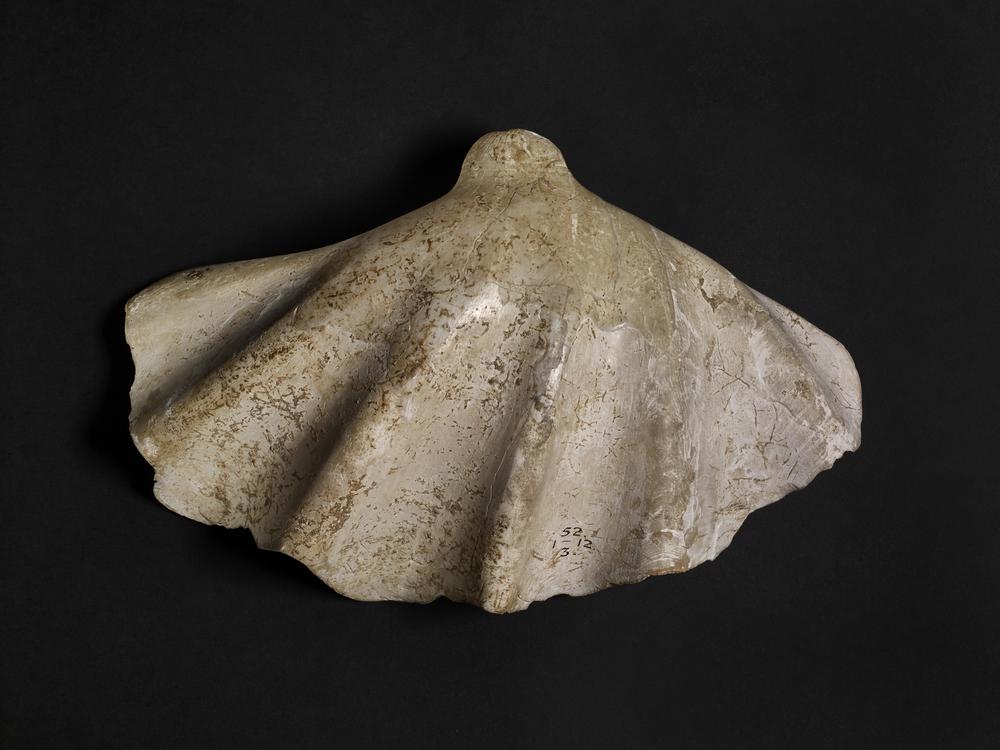Phoenician Cosmetic Container: Shell Vessel from the 7th Century BC

In the annals of ancient art and craftsmanship, few artifacts capture the imagination quite like the Phoenician shell cosmetic container from the 7th century BC. This remarkable vessel, crafted from a clam shell of Tridacna squamosa, serves as a testament to the ingenuity and creativity of the Phoenician artisans who inhabited the shores of the eastern Mediterranean.
At first glance, the shell cosmetic container appears as a simple yet elegant vessel, its smooth surface hinting at the treasures it once held. Yet, upon closer inspection, one is struck by the exquisite craftsmanship and attention to detail that went into its creation.
The focal point of the container is the umbo, or the central protrusion of the clam shell, which has been masterfully carved into the likeness of a woman’s head. With delicate precision, the features of the woman emerge from the surface of the shell, her serene expression and graceful contours evoking a sense of timeless beauty and elegance.

But what truly sets this container apart is the natural form of the shell itself, which lends an air of enchantment to the composition. The curves and ridges of the shell create the impression of a windblown cloak draped over the woman’s head, adding a sense of movement and fluidity to the design. It is as though the very essence of the sea has been captured and transformed into a work of art.
The use of the clam shell as a container for cosmetics is a testament to the resourcefulness and practicality of the ancient Phoenicians. Known for their maritime prowess and trading networks, the Phoenicians were skilled artisans who excelled in working with a variety of materials, from precious metals to humble shells. In this case, the clam shell not only served as a practical vessel for storing cosmetics but also as a canvas for artistic expression.

The symbolism imbued within the container is also worth noting. In ancient societies, cosmetics were often associated with beauty, fertility, and protection against evil spirits. By carving the umbo in the likeness of a woman’s head, the artisans may have sought to imbue the container with these qualities, making it not only a functional object but also a talisman of beauty and well-being.
Furthermore, the presence of the woman’s head on the shell cosmetic container may also suggest a connection to goddess worship or female deities prevalent in Phoenician religion. Throughout the ancient Near East, women played prominent roles in religious rituals and ceremonies, often serving as priestesses or devotees of goddesses associated with fertility, love, and protection.

As we reflect on the significance of the Phoenician shell cosmetic container, we are reminded of the enduring allure of ancient art and craftsmanship. Through their skill and creativity, the artisans of Phoenicia were able to transform humble materials into objects of beauty and significance, leaving behind a legacy that continues to captivate and inspire.
In the end, the shell cosmetic container stands as a testament to the timeless appeal of beauty and the ingenuity of human creativity. It serves as a tangible link to the past, offering a glimpse into the lives and beliefs of the ancient Phoenicians, while also reminding us of the enduring power of art to transcend time and culture.









